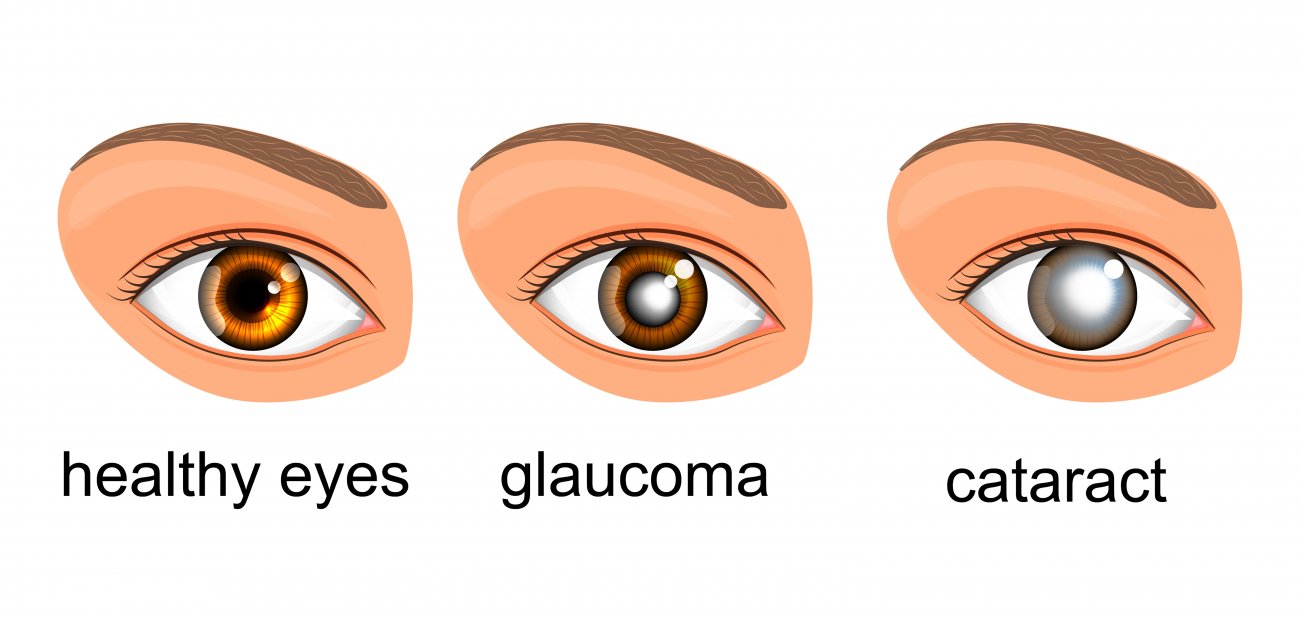Glaucoma
Glaucoma
GLAUCOMA
The sneak thief of sight
Glaucoma, often called the "sneak thief of sight," is a disease that strikes without any obvious symptoms. You usually don't even know it's there until serious vision loss has occurred. And unfortunately, there is no cure for glaucoma. Once you have lost your vision, it can't be restored. The good news is that glaucoma can be detected early before there is any loss of vision. Plus, there are convenient treatments that can lower intraocular pressure (IOP), one of the major risk for glaucoma. The key to managing diseases that cause vision loss are early diagnosis, proper treatment, and regular eye exams.
Why is glaucoma the main suspect?
Glaucoma is an eye disease that involves damage to the optic nerve which sends visual signals to the brain. No one knows exactly what causes this damage, but pressure buildup in the eye is proven to be one of the major risk factors associated with glaucoma . When the optic nerve gets damaged by high IOP, some signals from the eye aren't transmitted tothe brain. This can result in visual field loss, and if not managed, could eventually lead to blindness.
There are several different types of glaucoma. The most common is called open angle glaucoma which accounts for about 80% of all cases. It develops slowly over time, usually after the age of 40. Patients with this type of glaucoma may experience a gradual narrowing of their peripheral vision, which many call "tunnel vision," or areas of vision loss.
Why is IOP (Intraocular pressure) such an important clue?
The front of the eye is filled with a liquid called the aqueous humor. This is produced by the eye to bathe and nourish its different parts. The aqueous humor normally flows out of the eye through various paths and chambers. When these paths get clogged aqueous humor gets trapped in the eye. This causes a pressure build up and leads to high IOP.
Doctors can easily measure IOP, and use it as an important clue in the diagnosis and treatment of glaucoma. Normal IOP is about 12 to 22 mm Hg. One of the most common and important tests for meausuring IOP is Tonometry. Tonometry is a procedure in which your doctor uses a tonometer to measure IOP. This test is important because high IOP is a major risk factor for glaucoma. However, high IOP doesn't necessarily mean you will have glaucoma, nor does normal IOP mean you don't have glaucoma. Controlling IOP is the major goal of glaucoma therapy. When IOP is controlled, the optic nerve is less at risk of being damaged, so vision may be preserved.
Could I become a victim?
Glaucoma is one of the most common causes of preventable blindness. One out of every five sufferers has a close relative with it. Could you be one of these people? Only your doctor can help you find out, but some people are at greater risk than others. Studies have proven that anyone who meets one or more of the following criteria is at increased risk: If you have any of these risk factors, it is important that you get regular eye checkups. Early detection and treatment of glaucoma can slow the disease's progression and help prevent blindness.
How can glaucoma be stopped?
It's awfully hard to stop glaucoma completely, but we have years of research that shows that treating the disease early helps preserve vision. The primary effect of any glaucoma treatment is lowering IOP. This has been proven over the years to be an effective way to help prevent or slow down vision loss in glaucoma patients. IOP canbe lowered with medication and/or surgery. In most cases, medication is used before surgery, which is often reserved for patients who haven't responded adequately to or are intolerant of medications. Most glaucoma patients instil eye drops to keep their eye pressures at a safe level. A patient may be on one, two or more different glaucoma eye drops. Laser treatment (laser trabeculoplasty) is a very safe and generally painless way to treat glaucoma and should be considered for all newly diagnosed cases of glaucoma. Successful laser treatment can keep the eye pressure down for many years without requiring eye drops. (The laser used is very different from the laser used to allow people to manage without glasses.) Surgery is also used to treat glaucoma: it is employed when the eye pressure cannot be controlled by drops and laser, and when patients cannot tolerate eye drops. Having glaucoma means that you must have a life-long association with your ophthalmologist.
The disease can be controlled but not cured, and it is essential that patients are seen regularly (for most this is six monthly).
The best way to control glaucoma and preserve your vision is through early detection and treatment.
Glaucoma is often referred to as "the sneak thief of sight" because it strikes without any obvious symptoms. Luckily, your doctor, who is a great detective, has tools to catch the early warning signs of glaucoma. If you have any of the risk factors for glaucoma or are over age 40, you should schedule an exam with an eye care professional.
